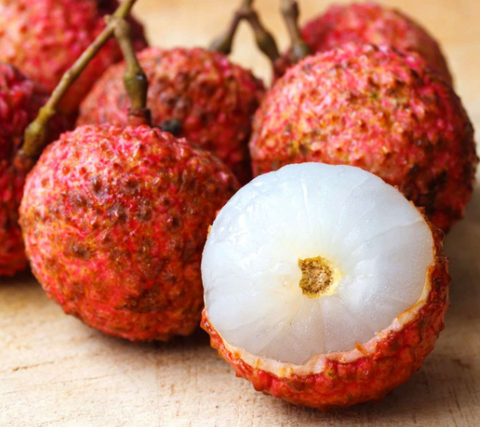Cultivating Sweet Success: Lychee Plant Care in a Metal Garden Bed
Introduction:
Lychee is a tropical fruit that has won the hearts and tastes of many with its sweet and unusual flavor. Even if you don't live in a tropical area, growing your own lychee tree can be enjoyable. This fruit can be grown in a metal garden bed, for example. In this blog, we'll go through the essential maintenance advice for growing a strong lychee plant in a metal garden bed so you can take pleasure in the sweet fruits of your labor.

How to Choose a Garden Bed:
It's important to choose a suitable metal garden bed for your lychee plant before moving on to care instructions. For the lychee's deep root system, choose a bed that is at least 24 inches deep. By cutting holes in the bed's base or installing raised beds with effective drainage systems, you may ensure efficient drainage.
Planting Lychee:
- Location: Lychee thrives in full sun, so choose a sunny spot in your garden for your metal garden bed. It requires a minimum of 6-8 hours of direct sunlight daily.
- Soil Preparation: Lychee prefers slightly acidic to neutral soil with good drainage. Mix organic matter such as compost or well-rotted manure into the soil before planting to improve its texture and fertility.
- Spacing: When planting lychee in a metal garden bed, leave at least 10 to 15 feet of space between plants to allow for mature growth. This ensures good air circulation and prevents overcrowding.
Lychee Plant Care:
Now, let's explore the care regimen for your lychee plant in a metal garden bed.
- Watering: Lychee trees prefer consistent moisture but are susceptible to root rot if waterlogged. Water deeply and regularly, especially during dry spells, but ensure the soil is well-drained.
- Fertilization: Lychee trees benefit from regular feeding. Use a balanced, slow-release fertilizer formulated for fruit trees. Apply it in the spring and again in late summer, following package instructions.
- Mulching: Apply a layer of organic mulch, like wood chips or straw, around the base of the lychee plant. Mulch helps retain soil moisture, regulates temperature, and suppresses weeds.
- Pruning: Prune your lychee tree to maintain its shape, improve air circulation, and remove dead or diseased branches. Do this during the dormant season in late winter or early spring.
- Pest and Disease Management: Keep an eye out for common lychee pests like aphids and scale insects. If you notice any issues, treat them promptly with insecticidal soap or neem oil. Prevent fungal diseases by ensuring good air circulation.
- Support: As your lychee plant grows, it may require support to prevent it from leaning or breaking under the weight of the fruit. Use stakes or a trellis system to provide necessary support.

Lychee Plant Care:
Now, let's explore the care regimen for your lychee plant in a metal garden bed.
- Watering: Lychee trees prefer consistent moisture but are susceptible to root rot if waterlogged. Water deeply and regularly, especially during dry spells, but ensure the soil is well-drained.
- Fertilization: Lychee trees benefit from regular feeding. Use a balanced, slow-release fertilizer formulated for fruit trees. Apply it in the spring and again in late summer, following package instructions.
- Mulching: Apply a layer of organic mulch, like wood chips or straw, around the base of the lychee plant. Mulch helps retain soil moisture, regulates temperature, and suppresses weeds.
- Pruning: Prune your lychee tree to maintain its shape, improve air circulation, and remove dead or diseased branches. Do this during the dormant season in late winter or early spring.
- Pest and Disease Management: Keep an eye out for common lychee pests like aphids and scale insects. If you notice any issues, treat them promptly with insecticidal soap or neem oil. Prevent fungal diseases by ensuring good air circulation.
- Support: As your lychee plant grows, it may require support to prevent it from leaning or breaking under the weight of the fruit. Use stakes or a trellis system to provide necessary support.
Harvesting Lychee:
Lychee fruits are ready to harvest when their skin turns reddish-pink and they easily detach from the tree with a gentle twist. Enjoy the sweet, juicy flesh right from the tree or use it in various culinary delights.
Conclusion:
In your own backyard, taking care of a lychee plant in a metal garden bed can produce sweet results. You may enjoy the distinctive flavor of homegrown lychee fruits by choosing the ideal place, improving the soil, and taking the necessary care. A touch of the exotic can be added to your landscape by growing this tropical treat in your metal garden bed with time and effort. Happy gardening!
